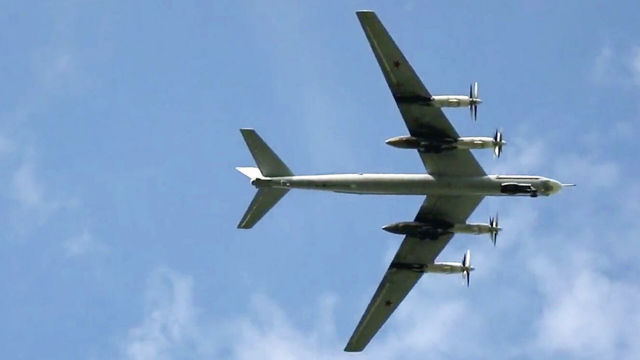Moscow. February 3. INTERFAX - British fighters took to the air because of two Russian Tu-95MS strategic bombers, which flew over the Barents Sea, the Norwegian Sea and the northeast Atlantic, the Russian Defense Ministry said on Thursday.
"At certain stages of the route, Russian strategic missile carriers were accompanied by Eurofighter Typhoon fighters of the British Air Force," the Russian Defense Ministry said.
According to the Russian military, two Russian strategic aircraft performed a scheduled flight over the neutral waters of the Barents Sea, the Norwegian Sea and the northeastern Atlantic Ocean. They were accompanied by MiG-31 long-range interceptor fighters of the Northern Fleet of the Russian Federation.
"During the flight, the crews of Tu-95 aircraft worked out refueling in the air. The duration of the flight was about 15 hours," the Russian Defense Ministry said in a statement.
On February 2, the Russian Defense Ministry reported that Norwegian and British Air Force fighters were taking to the air due to the flight of two Russian Tu-142 long-range anti-submarine aircraft for exercises in the northeast Atlantic. According to the Russian military, the flight of the Russian Tu-142 took place in strict accordance with international rules for the use of airspace over the neutral waters of the Barents, Norwegian Seas and the Atlantic Ocean.
The Tu-95MS aircraft, like the Tu-160, are an aerial component of the Russian nuclear triad. They are designed to defeat the most important targets in the deep rear of the enemy with nuclear and conventional weapons.
The Tu-95MS (according to the NATO codification: Bear - "Bear") is the world's fastest turboprop serial missile carrier aircraft. It was put into serial production in 1981 as a modification of the Tu-95 strategic bomber, which had been in service with the Russian Air Force since 1957.
The Tu-142 (according to the NATO codification - Bear-F) is a long-range anti-submarine defense aircraft, one of the largest in the world, designed to combat submarines. The practical flight range is 12.5 thousand km, the combat range is 6.4 thousand km.
In March 2018, Russian Defense Minister Sergei Shoigu said that "for the first time since Soviet times, anti-submarine aviation flights have been carried out across the North Pole to the North American continent." At that time, sources told Interfax that two Russian anti-submarine aircraft accompanied by fighter jets and a tanker aircraft made the flight across the North Pole.
Russian strategic aviation - Tu-160 and Tu-95MS, as well as anti-submarine aircraft Tu-142 and Il-38 regularly fly over the waters of the Arctic, the North Atlantic, the Black and Baltic Seas, and the Pacific Ocean.

